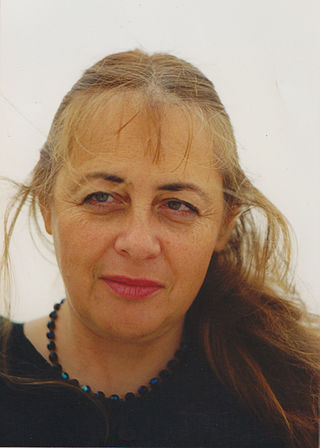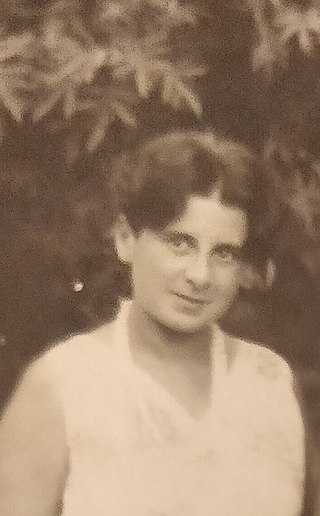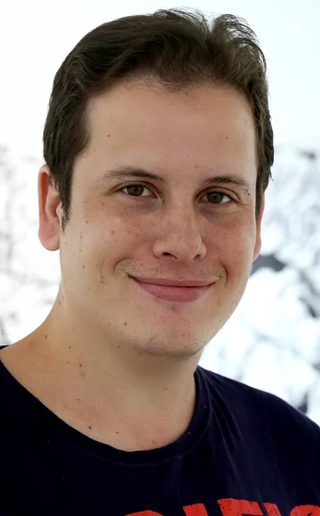Fatma Shanan | |
|---|---|
 Fatma Shanan selfportrait | |
| Born | 1986 |
| Nationality | Israeli |
| Known for | Painting |
| Movement | Figurative, Realism |
| Website | http://www.fatmashanan.com |
Fatma Shanan | |
|---|---|
 Fatma Shanan selfportrait | |
| Born | 1986 |
| Nationality | Israeli |
| Known for | Painting |
| Movement | Figurative, Realism |
| Website | http://www.fatmashanan.com |
Fatma Shanan was born in 1986 and grew up in Julis, Israel. As a kid, she attended private art lessons due to the lack of art courses in her elementary school curriculum. [2] She studied visual arts at the Oranim Academic College from 2007 to 2010. Afterwards, she studied in the studio of traditionalist Israeli artist Elie Shamir for a year. [2] She lives and works between Tel Aviv and Julis. [3]
Shanan is known for her figurative oil paintings of scenes of Druze villages and is inspired by 19th and 20th-century realism. [4] Almost all of her paintings are derived from staged photographs, [5] which utilize family and friends as models. [6] Many of her pieces feature traditional Eastern carpets, which contrast with her Western landscapes. [3] The image of the oriental carpet is prominent in the Druze culture and common in most households. The carpet serves as an object of prayer, which must stay clean and not be stepped on. The carpet maintenance is often a job attended to by a woman. [6] Her work primarily deals with identity by representing figures in domestic and public spheres. [3] She especially focuses on her identity as a woman within her community and how that has impacted her life, aspiring to develop more fluidity between genders and other demographics. [4]
She has also produced several self-portraits, which similarly contain carpet patterns or other objects showing identity. [2] One piece, titled "Floating Self Portrait" depicts Shanan levitating over a carpet, which was developed from a video she took in the Metropolitan Museum of Art. [2]
Fatma Shanan held solo and group exhibitions in galleries and museums around the world, including solo exhibitions in Tel Aviv Museum of Art, [7] Zemack Contemporary Art, [1] and Umm al-Fahm Art Gallery. [8] She has participated in many group exhibitions including ones at the Museum of Islamic Art in Jerusalem, Janco Dada Museum, Bloomfield Science Museum, The Mediterranean Biennale in Sakhnin, Fresh Paint art fair and Alfred Institute for Contemporary Art. [9] [10]
Fatma Shanan's works are part of collection of Israel Museum in Jerusalem. [11]
Shuli Nachshon is a video and installation artist, who lives and works in Israel.
Amnon David Ar is an Israeli painter. He studied at the Arts and Crafts Municipal High School of Tel Aviv until the age of eighteen. After completing his compulsory military service, he studied anatomy with Oswald Adler. He then spent one year at the Bezalel Academy of Arts and Design in Jerusalem, before leaving, because he felt that both the training and the curriculum didn't provide the skills and knowledge he was looking for. For this reason, Ar decided to organize his own studies, and spent a further year learning painting and drawing with Abraham Bykov. By studying with older artists, Ar has trained himself in a traditional way, and can, at least in part, be considered an autodidact. During his studies, Ar worked as a chief illustrator and caricaturist at Maariv and also at Yedioth Tikshoret. Today, Ar also teaches painting and drawing, with the express intention of passing on to the next generation of artists, his experience, and with it his understanding of the artistic skills of the past. In 2014 Ar moved to Berlin, where he has his studio and teaches.

Nurit Yarden is an Israeli Art photographer, who lives and works in Tel Aviv. She won the Israel Ministry of Culture Prize for the Encouragement of Visual Arts in 2002.

Miri Nishri is an interdisciplinary Israeli artist.
Ruth Arion was a German-Israeli painter and enamel artist and one of the founders of Ein Hod Artists’ Village. Her works reflect her experiences as she moved from place to place in the Land of Israel from the 1930s through the 1990s.
Ofakim Hadashim is an art movement started in Tel Aviv in 1942.
Ella Amitay Sadovsky is an Israeli artist, born in Kibbutz Gesher, Israel.

Miriam Cabessa is an Israeli-American painter, performance and installation artist, winner of the 2022 Israeli Ministry of Culture Lifetime Achievement Award. Cabessa was born in Morocco, raised in Israel, and has lived and worked in New York City since 2000. Her slow action painting has been internationally recognized since 1997 when she represented Israel at the Venice Biennale. Over the past two decades, she has abstained from using brushes, opting to make marks with objects and her body. Her imagery ranges from organic to mechanistic with surfaces that are both haptically handmade and digitally serene. Cabessa has shown extensively in the U.S., Europe, and Israel.
Tal Shochat is an Israeli photographer.

Ayelet Carmi, is an Israeli painter and installation artist.

Michael Sgan-Cohen was an Israeli artist, art historian, curator and critic. His oeuvre touches different realms of the Israeli experience and the Hebrew language, displaying a strong connection to the Jewish Scriptures. His works were nurtured by his extensive knowledge of Art history, philosophy, Biblical Texts, Jewish thought and Mysticism, which in turn illuminated all these pursuits. His engagement with Judaism and the Bible as a secular scholar and his vast knowledge of modern and contemporary art contributed to the development of a distinctive approach which combined Jewish and Israeli symbols and images to create a multilayered and contemporary artistic language.
Nona Orbach is an Israeli multidisciplinary artist, art therapist and teacher.

Maya Attoun was an Israeli multidisciplinary artist, born in Jerusalem. She lived and worked in Tel Aviv.
Tamar Raban is an Israeli artist, who also creates and works in performance field. Founder and Artistic Director of Performance Stage, Ensemble 209 and the ZAZ Festival. She is one of the most prominent performance artists in Israel and her performances have been exhibited in Israel and abroad in festivals, theaters, galleries, museums, shelter 209 and in performance stage. Co-founder of the Dan Zackheim 209 Shelter for the Advancement of Interdisciplinary Art in Israel Founder and Artistic Director of the Performance and Ensemble Stage 209.

Karam Natour is a visual artist. Natour’s practice employs a variety of mediums, including video, digital drawing, and installation, although he considers video his ‘mother tongue’

Esther Berlin-Joel (also known as Esther Berli-Joel, Esther Barli-Joel, in Hebrew: אסתר ברלי-יואל, was a German-born Israeli painter and graphic designer. She designed the coats of arms for the Israeli cities of Haifa and Holon.
Batia Friedkes Grossbard was a Polish-born Israeli painter influenced by American abstract expressionism.
Roni Taharlev is an Israeli figurative painter.

Noam Omer is an Israeli artist.

Shahar Tuchner is an Israeli artist who works primarily in video, sculpture, painting and installations.